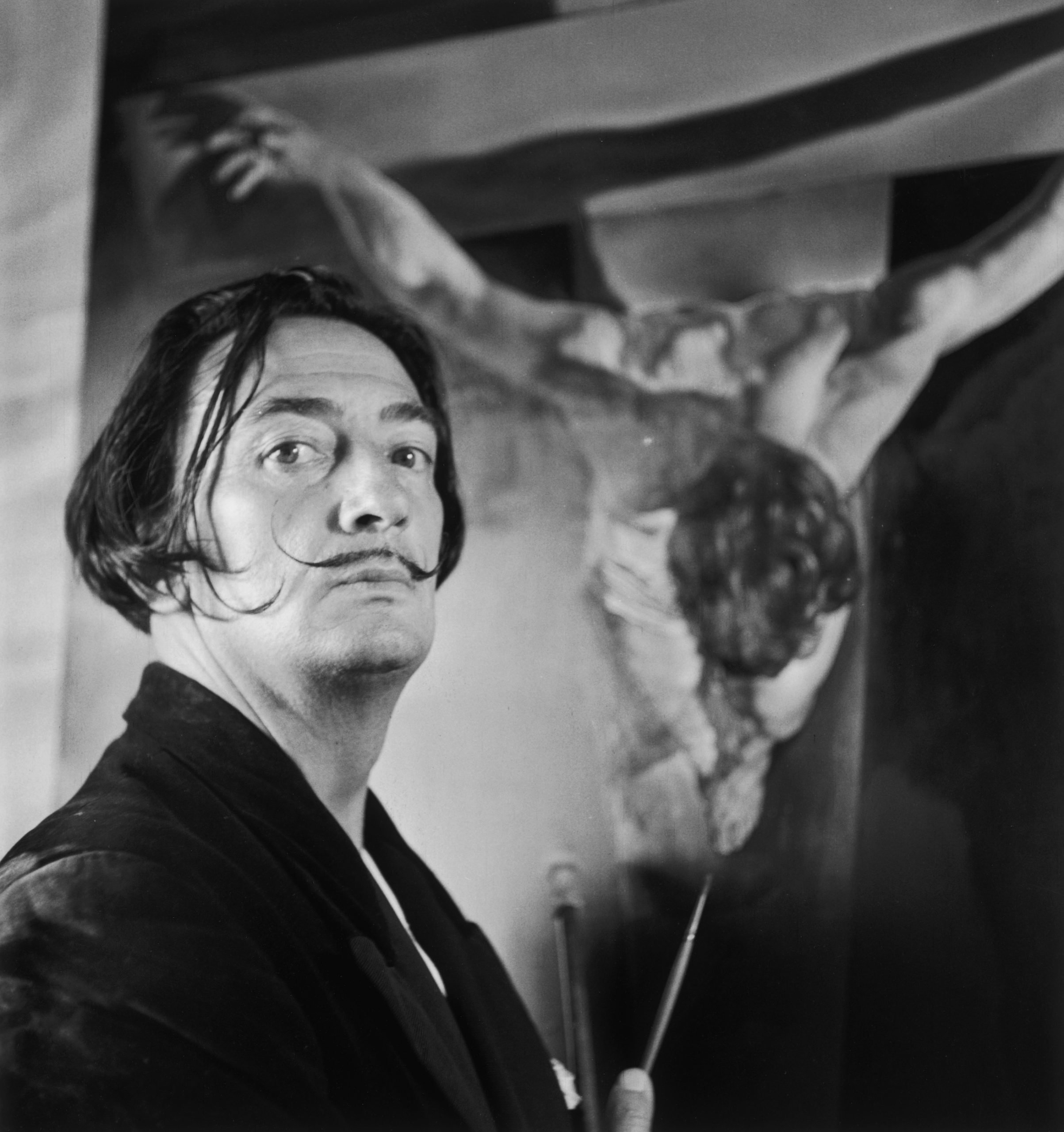
Nowadays, the Spanish artist Salvador Dalí is best known for Surrealist paintings like The Persistence of Memory (1931) and The Temptation of St. Anthony (1946). But, after World War II, Dalí moved away from the absurdist dreamscapes that had turned him into an international sensation to produce more grounded but still recognizably surrealist religious scenes inspired by the Renaissance.
For one of these scenes, Christ of Saint John on the Cross (1951), Dalí wanted a model with muscles, so, sensibly, he headed to Muscle Beach in Los Angeles, where one Russ Saunders, an acrobat and Hollywood stuntman, was known to somersault over the heads of unsuspecting passersby or march down the boardwalk carrying one woman on each shoulder. His handsome face and godlike physique struck Dalí as Christlike, and before long Saunders flew to Dalí’s home in Catalonia, Spain, to have his sculpted body suspended from the artist’s ceiling.
Dalí needed a model who could dangle for extended periods of time, because he wished to paint the crucifixion from an angle that no artist had ever attempted before. The completed painting, which looks down on Christ on the cross floating above the Earth, proved equal parts groundbreaking and controversial.
So controversial, in fact, that the work was vandalized not once but twice while on display at the Kelvingrove Art Gallery and Museum in Glasgow.
In 1961, a man attacked Christ of Saint John with a stone, slashing the lower end of the large canvas before ripping an eight-foot tear that took months to repair (you can see traces of tear on the painting’s surface from certain angles). The second vandal reportedly shot at the painting with a rifle or air rifle during the early 1980s, hitting the acrylic glass installed after the previous assault.
Today, the painting is roped off and surveilled by four video cameras.
Salvador Dalí, Christ of St. John of the Cross (1951) at the Dali Foundation in 2023. Photo: Gloria Sanchez/Europa Press via Getty Images.
While the exact motives of the attackers remain unknown, there are many reasons someone might target Dalí’s work. Christians might take issue with the artist’s unorthodox portrayal of the crucifixion. Unlike other interpretations, Dalí’s lacks nails, blood, and thorns—features that Dalí says he was encouraged to omit in a dream, on grounds they tarnished Christ’s divine perfection.
The unprecedented perspective of Christ of Saint John also strikes some as blasphemous. As mentioned, Dalí painted Christ from above as opposed to below, allowing the viewer to gaze down as opposed to up at Jesus.
Maybe the vandals took issue with the way Dalí identifies himself with Christ. As as writer Kasra Lang pointed out in the Los Angeles Review of Books, the landscape at the bottom of the canvas does not resemble the area outside Jerusalem where Christ was crucified so much as it does the Bay of Portlligat in Catalonia, near the artist’s own home. Similarly, art critics have speculated that the figure mourning Christ is not Mary Magdalene, but Dalí’s wife, Gala.
What’s certain is that Dalí became a more and more divisive figure as the years passed. Aside from abandoning “pure” Surrealism in favor of religious iconography, he was fiercely criticized for his support of Spanish dictator Francisco Franco, a politician despised by his fellow (and generally left-leaning) Surrealists.
That said, Dalí’s support of Franco, not unlike his depiction of Christ, may have been intended as a twisted, Surrealist statement in and of itself. “The difference between the Surrealists and me,” he once proclaimed, “is [that] I myself am Surrealism.”
What’s the deal with Leonardo’s harpsichord-viola? Why were Impressionists obsessed with the color purple? Art Bites brings you a surprising fact, lesser-known anecdote, or curious event from art history.